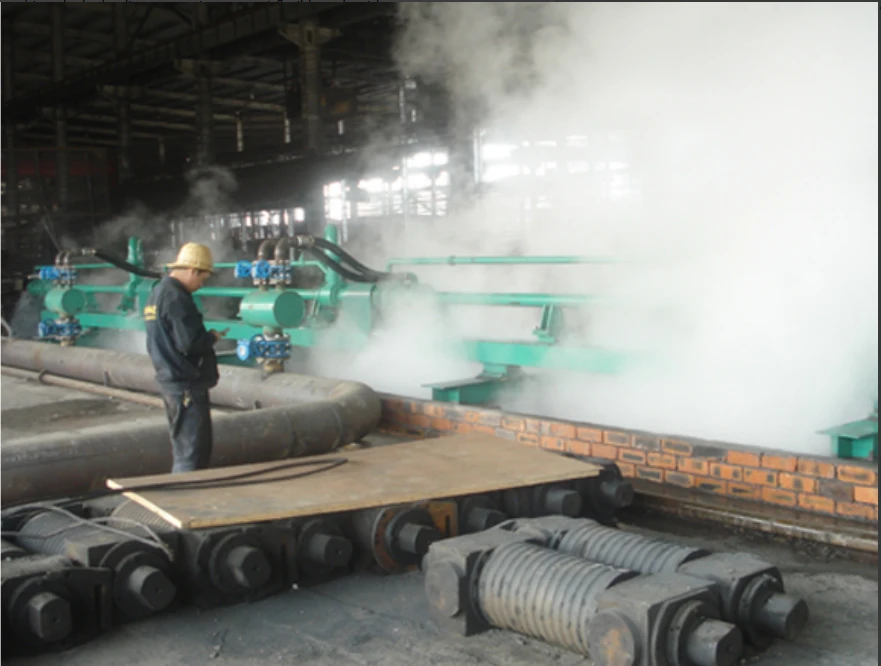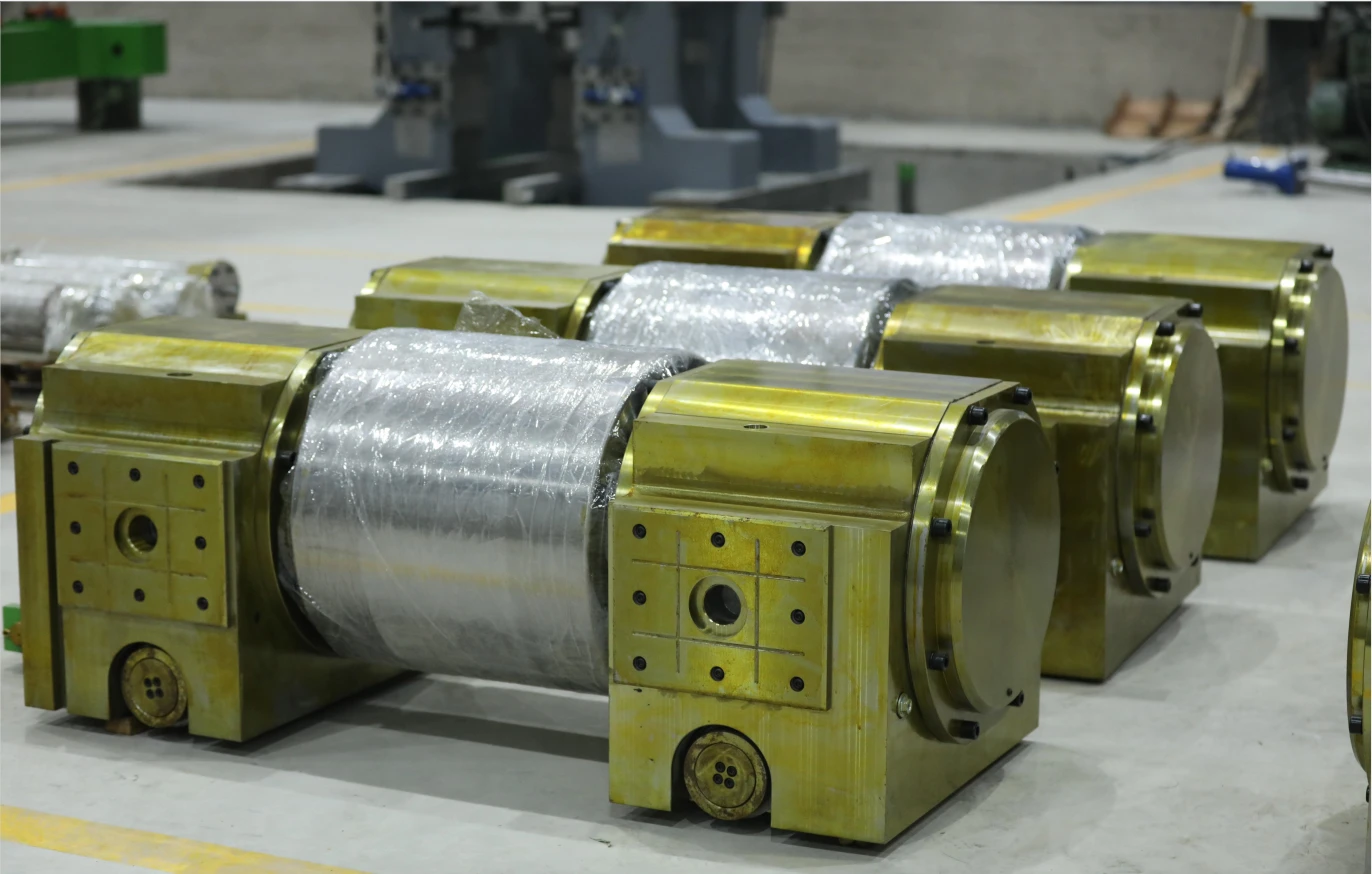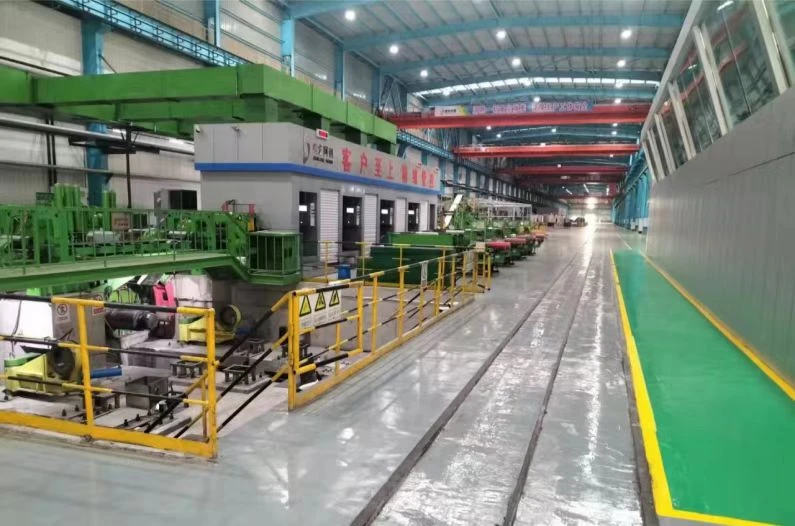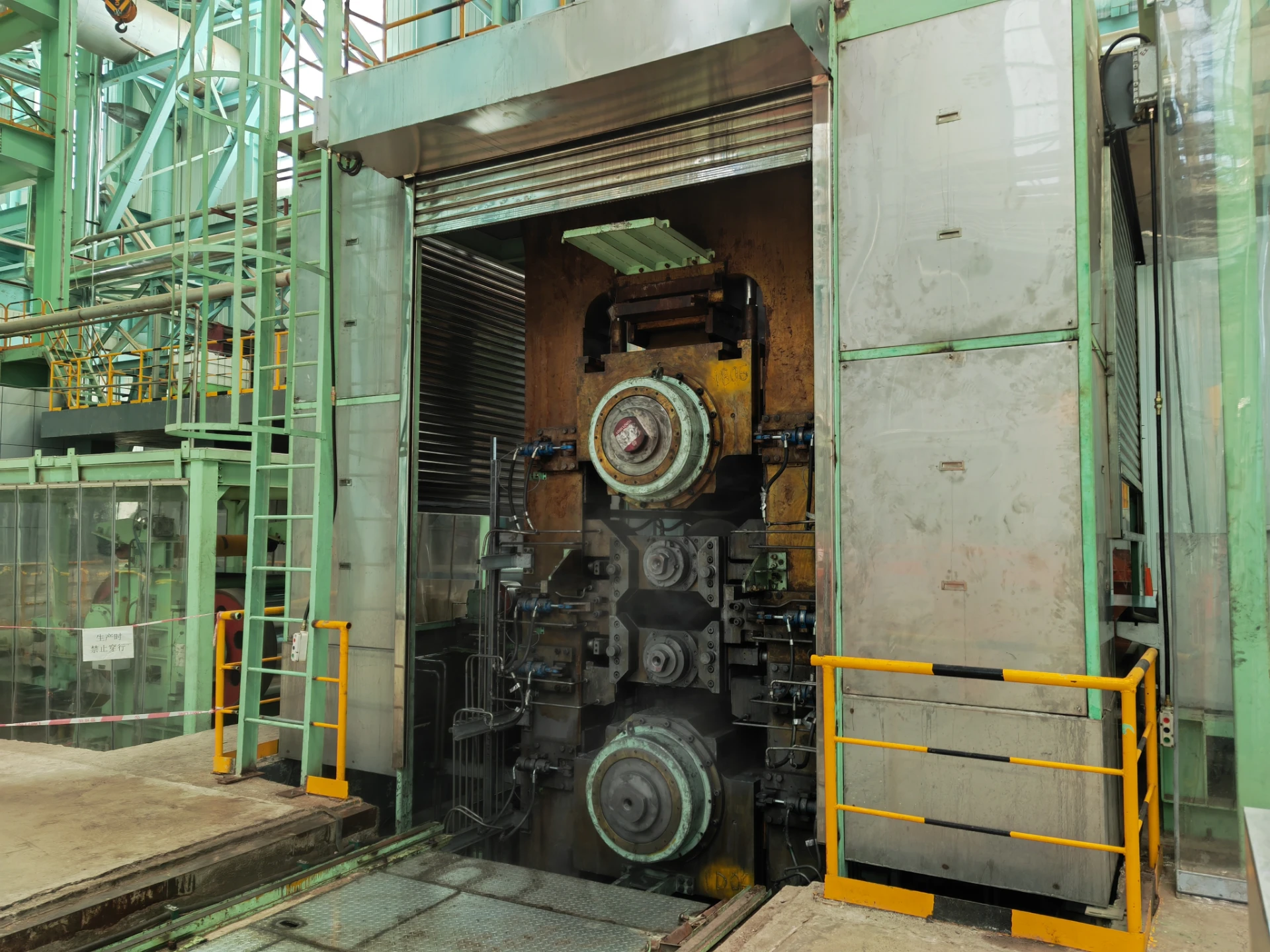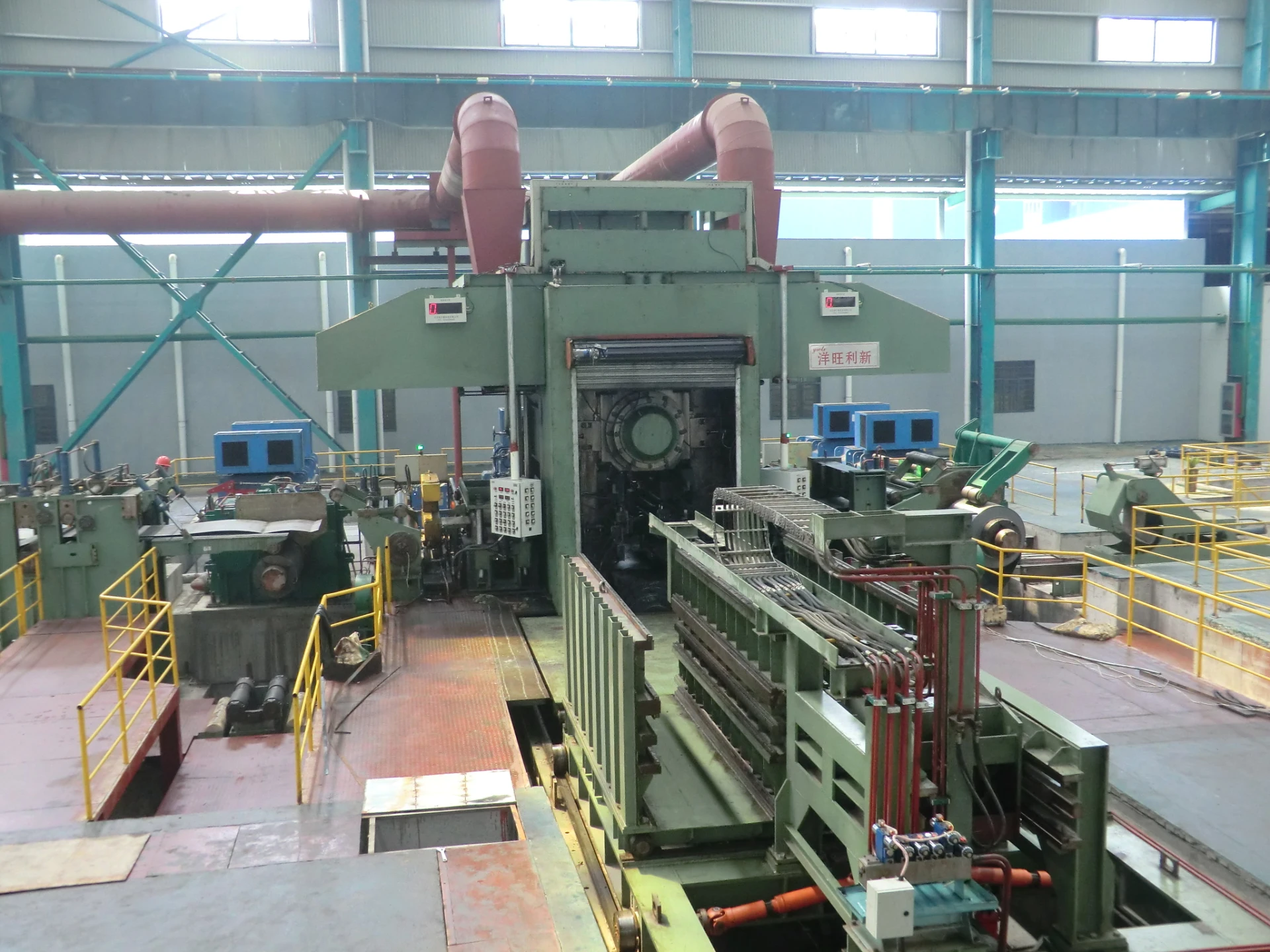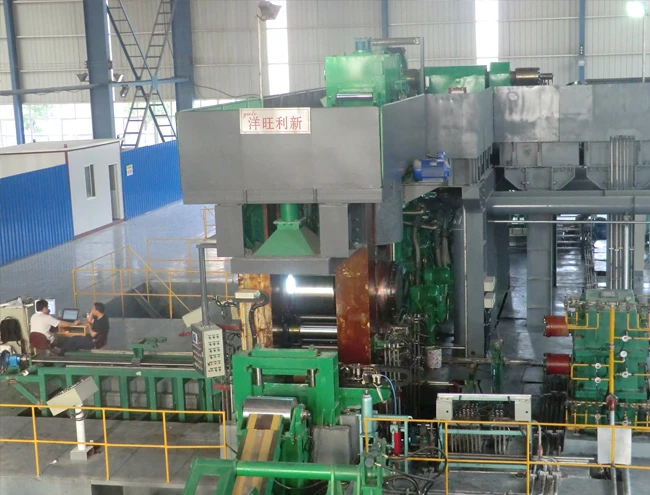
Advanced Tandem Cold Mill Solutions for Precision Rolling
Advanced Cold Rolling Technology for Modern Metallurgy
Understanding the Core: The Tandem Cold Rolling Mill in Industrial Production
The Tandem Cold Rolling Mill stands as a cornerstone in modern metal processing, critical for producing high-precision, thin-gauge metal strips with superior surface finish and mechanical properties. Unlike hot rolling, cold rolling occurs below the recrystallization temperature of the metal, significantly enhancing strength, hardness, and dimensional accuracy while allowing for exceptional surface quality. This process is indispensable across numerous industries, from automotive to electronics, where stringent material specifications are paramount. A tandem cold mill typically comprises multiple rolling stands arranged in sequence, allowing for continuous and progressive reduction in strip thickness. This configuration ensures consistent tension control and precise gauge regulation across the entire length of the coil, crucial for achieving uniform material properties. The complexity of these mills necessitates advanced automation systems, including sophisticated automatic gauge control (AGC) and automatic flatness control (AFC) systems, which continuously monitor and adjust rolling parameters in real-time. The integration of advanced sensor technologies and robust control algorithms enables these mills to meet the ever-increasing demands for tighter tolerances and higher production efficiency, ultimately driving innovation in manufacturing. The evolution of steel and non-ferrous metal products relies heavily on the capabilities of advanced cold rolling technologies, pushing boundaries in material science and application, ensuring competitive edge in global markets.
Integrated Process Flow: From Pickling to Precision Rolling
The journey of steel or non-ferrous metal from a hot-rolled coil to a precision cold-rolled strip begins long before it enters the tandem cold mill. A crucial prerequisite is the pickling process, which typically occurs in a pickling line and tandem cold mill setup. The pickling line is designed to remove surface oxides, known as mill scale, which are formed during hot rolling. This is achieved by immersing the strip in an acidic solution, usually hydrochloric acid, followed by rinsing and drying. Effective descaling is paramount, as residual scale can impair the surface quality of the final product and cause defects during cold rolling, leading to costly rejections. The pickling process itself is highly engineered, involving precise control of acid concentration, temperature, and immersion time to achieve optimal scale removal without excessive material loss or hydrogen embrittlement. After pickling, the clean, descaled strip is fed into the tandem cold mill. The coil is first uncoiled from a pay-off reel, often passing through a shear for head and tail cropping to ensure a clean leading edge. It then proceeds through a series of rolling stands, typically ranging from three to six stands, each progressively reducing the strip thickness. Between each stand, precise tension control, managed by tension levelers and loopers, is critical to prevent buckling or tearing of the strip and to maintain stable rolling conditions, ensuring continuous operation at high speeds.
The immense rolling forces, applied by work rolls and supported by backup rolls, are controlled with micron-level precision to achieve the desired final gauge and flatness. Throughout this continuous process, advanced lubrication and cooling systems are essential to manage friction and heat, ensuring the longevity of the rolls and the quality of the strip. The manufacturing process of the components within a tandem cold mill itself adheres to rigorous engineering standards. Critical components, such as work rolls, backup rolls, and mill housings, are manufactured from high-grade alloy steels, often involving precise casting and forging processes to achieve the necessary strength and wear resistance under extreme pressure and temperature. These components then undergo meticulous CNC machining to attain incredibly tight dimensional tolerances, ensuring optimal performance, precise alignment, and minimal vibration within the mill. For instance, the concentricity and surface finish of rolling rolls are critical for producing high-quality strips without defects. Each component is subjected to stringent quality control, including non-destructive testing (NDT) like ultrasonic testing and magnetic particle inspection, to detect any internal defects that could compromise structural integrity or performance. Compliance with international standards such as ISO 9001 for quality management and ANSI standards for specific mechanical components is routinely observed, guaranteeing reliability. The design life of major components, such as mill housings, can extend beyond 30 years with proper maintenance, while rolls and bearings have specified replacement cycles based on wear characteristics. These mills are applicable across diverse sectors, including the petrochemical industry for producing stainless steel pipes, the metallurgy industry for various flat products like galvanized sheets, and even in water supply and drainage systems for specialized materials requiring corrosion resistance. Their advantages in typical application scenarios include significant energy savings through optimized roll bite and advanced motor controls, as well as superior anti-corrosion properties for specialty alloys processed through these high-precision systems.
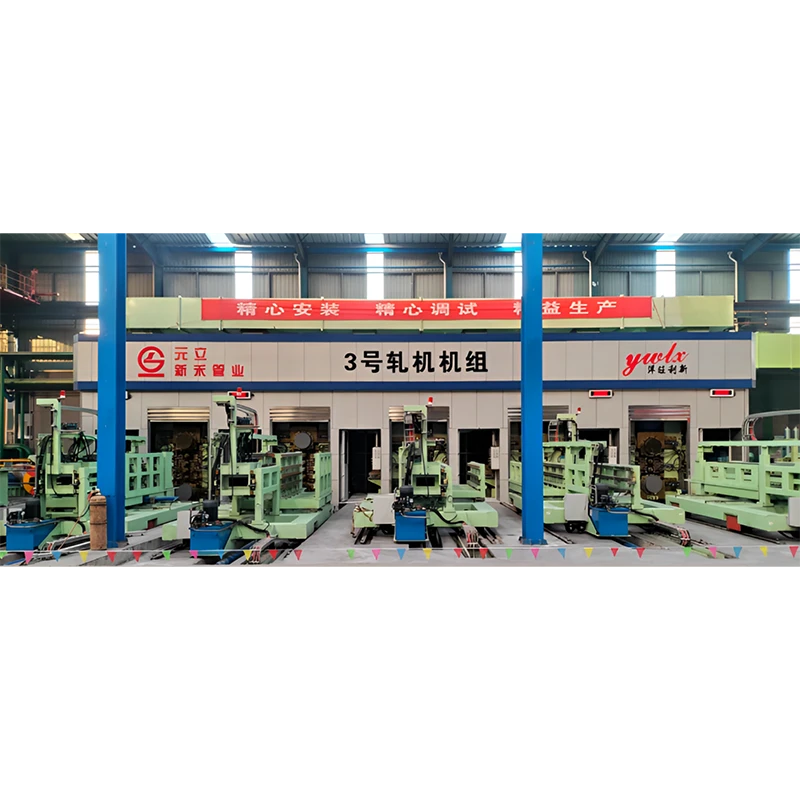
Technical Specifications & Performance Benchmarks
The performance of a tandem cold mill is defined by a complex interplay of technical parameters, each critical for achieving the desired output quality and production efficiency. Key specifications include the number of rolling stands, typically ranging from 3 to 6, with a 5-stand configuration being common for high-volume production of thin gauges. This multi-stand setup allows for distributed reduction, minimizing stress on individual stands and optimizing overall power consumption. Rolling speed, measured in meters per minute (mpm), is a primary indicator of productivity, with advanced mills reaching speeds exceeding 1200 mpm for certain applications, enabling high throughput. The maximum strip width that can be processed is another critical dimension, often ranging from 600 mm for specialized products to over 2200 mm for wide steel coils, depending on the mill's design and intended applications. Material thickness capabilities are expressed as entry and exit gauges; for instance, an entry thickness might be 1.5-6.0 mm, reduced to an exit thickness of an astonishing 0.1-1.5 mm, showcasing the mill's precision. The total reduction ratio, sometimes exceeding 90%, highlights the mill's capacity to drastically thin the material while maintaining structural integrity. Motor power, typically measured in kilowatts (kW) for each stand and the main coiler/uncoiler, dictates the mill's strength and speed capabilities, with total installed power often in the tens of megawatts, supporting immense rolling forces.
Modern tandem mill rolling operations incorporate sophisticated automation and control systems that ensure superior product quality. Automatic Gauge Control (AGC) systems, utilizing advanced feedback loops and high-response hydraulic or electromechanical actuators, maintain exit gauge variations to within +/- 1-2 microns, even at high speeds and during transients, representing world-class precision. Automatic Flatness Control (AFC) systems, employing various roll bending, tilting, or segmented cooling techniques, actively counteract shape defects like edge wave or center buckle, ensuring a perfectly flat strip that meets stringent industry standards. Tensiometers precisely monitor and control inter-stand tension, a crucial factor for stable rolling, preventing strip breaks, and optimizing reduction distribution across stands. Lubrication systems, often using oil-in-water emulsions with precise temperature and concentration control, reduce friction between the work rolls and the strip, preventing wear and improving surface finish to meet aesthetic and functional requirements. The efficiency of a tandem cold mill is also measured by its uptime, yield rate (minimizing scrap), and energy consumption per ton of steel, all optimized through intelligent control. Predictive maintenance systems, integrated with mill automation, monitor component health in real-time using vibration analysis and temperature sensors, minimizing unscheduled downtime and extending operational life. These precise technical specifications and integrated control mechanisms enable our Tandem Cold Rolling Mills to deliver unparalleled performance and consistent quality for the most demanding industrial applications globally.
Typical Tandem Cold Rolling Mill Parameters
| Parameter | Typical Value Range | Unit |
|---|---|---|
| Number of Stands | 3 - 6 | - |
| Max Rolling Speed | 800 - 1500 | mpm |
| Max Strip Width | 800 - 2200 | mm |
| Entry Thickness | 1.5 - 6.0 | mm |
| Exit Thickness | 0.1 - 1.5 | mm |
| Gauge Accuracy (AGC) | +/- 1 - 2 | microns |
| Total Installed Power | 5 - 50+ | MW |
Strategic Advantages & Application Versatility
The technical advantages offered by a well-designed tandem cold mill are multifaceted, directly translating into significant operational and competitive benefits for manufacturers. Foremost among these is the ability to achieve exceptionally tight gauge tolerances and superior flatness, critical for demanding end-user applications in sectors like automotive, where lightweighting and precise component fit are essential. This precision minimizes material waste in downstream processes and ensures product integrity. The enhanced mechanical properties, including increased yield strength and tensile strength, coupled with excellent surface finish and reduced anisotropy (direction-dependent properties), make the cold-rolled strip ideal for subsequent processing such as stamping, deep drawing, and forming, where uniform material behavior is crucial. Furthermore, modern tandem cold mill systems are engineered for high throughput and energy efficiency. Optimized roll gap control, precise tension regulation, and advanced drive systems with energy recovery capabilities minimize energy consumption per ton of processed material, contributing to lower operational costs and a reduced carbon footprint, aligning with global sustainability goals. The inherent continuous nature of tandem mill rolling significantly boosts productivity compared to reversing mills, reducing material handling and processing time, thus accelerating time-to-market for finished products.
The versatility of tandem cold mill technology extends across a wide array of materials and industries, handling everything from standard carbon steels to specialized stainless steels and advanced non-ferrous alloys like aluminum and copper. In the automotive sector, these mills produce high-strength low-alloy (HSLA) steels and advanced high-strength steels (AHSS) used in vehicle body structures, improving safety, fuel efficiency, and crashworthiness. For the electrical industry, precision cold-rolled silicon steel is crucial for transformers and motors, ensuring high magnetic permeability and low core losses, which directly impacts energy transmission efficiency. The construction industry utilizes cold-rolled products for roofing, cladding, and structural elements due to their superior strength-to-weight ratio, durability, and aesthetic appeal. In the packaging sector, ultra-thin gauge tinplate and aluminum foil produced by these mills are indispensable for food and beverage container111s, ensuring product freshness and extended shelf life. Our Tandem Cold Rolling Mills are meticulously designed to handle diverse material compositions, providing bespoke solutions for clients globally. We have successfully implemented solutions for major metallurgical complexes in Asia and Europe, enabling them to achieve new benchmarks in product quality and operational efficiency. One notable case involved a custom-engineered 5-stand mill that achieved a 15% reduction in specific energy consumption while simultaneously improving gauge accuracy by 25% for a client in the automotive steel supply chain, directly impacting their competitive standing.
Choosing the Right Partner: Manufacturer Comparison and Custom Solutions
Selecting the optimal tandem cold mill solution requires a deep understanding of market offerings and a partner capable of delivering highly customized systems. When evaluating manufacturers, several key differentiating factors emerge, influencing both initial investment and long-term operational costs. Established European and Japanese manufacturers often emphasize high-precision engineering, long-term reliability, and advanced proprietary control algorithms, often at a premium cost, but providing exceptional quality and minimal downtime. Emerging manufacturers from Asia, while perhaps offering more cost-effective solutions, have rapidly advanced in automation and capacity, providing robust and efficient mills tailored to specific production volumes and regional market demands. Critical considerations for selection include the manufacturer's track record, the breadth of their technological expertise in areas like hydraulic AGC, shape control systems, lubrication management, and integration with Industry 4.0 paradigms. Furthermore, the ability to provide integrated solutions, encompassing everything from upstream pickling line and tandem cold mill integration to downstream finishing lines (such as annealing and slitting), can significantly streamline project execution and operational synergy, reducing interface risks. Our extensive service tenure, exceeding two decades in the metallurgical equipment industry, underscores our profound understanding of these complex systems and our unwavering commitment to client success, built on a foundation of trust and proven performance.
At Beijing YWLX, we specialize in delivering bespoke tandem cold mill solutions that are meticulously engineered to meet unique client requirements, transcending standard off-the-shelf offerings. Our approach begins with a comprehensive feasibility study, analyzing desired product specifications (e.g., specific alloy grades, target thicknesses, surface finishes), production capacities, and existing infrastructure. This allows us to design mills optimized for maximum efficiency and quality output. For instance, for a client producing ultra-thin stainless steel foils for medical applications, we designed a mill with enhanced flatness control and specialized roll surface treatments to prevent contamination and achieve mirror-like finishes, critical for their specific market. Conversely, for a bulk steel producer, our focus shifted to maximizing throughput and energy efficiency, integrating advanced motor-generator sets and heat recovery systems to reduce operational expenditures significantly. We pride ourselves on offering comprehensive solutions, from initial consultation and conceptual design to manufacturing, installation, commissioning, and ongoing technical support. Every mill we deliver is backed by a robust warranty, typically spanning 12-24 months post-commissioning, and a dedicated team for rapid parts supply and technical assistance, ensuring minimal operational disruption. Our commitment to client satisfaction and operational excellence has positioned us as a trusted partner for steel and non-ferrous producers worldwide, reflecting our deep experience and authoritative standing in the industry.
Frequently Asked Questions (FAQ) about Tandem Cold Rolling Mills
-
Q1: What is the primary difference between hot rolling and tandem cold mill rolling?
Hot rolling occurs above the metal's recrystallization temperature, primarily for significant thickness reduction and shaping, resulting in a rougher surface finish and lower dimensional accuracy. Cold rolling, performed below the recrystallization temperature in a tandem cold mill, focuses on achieving precise dimensions, superior surface finish, and enhanced mechanical properties like increased strength and hardness. It's an essential secondary process for high-quality finished products requiring tight tolerances.
-
Q2: How does a tandem cold mill achieve precise gauge control?
Precision gauge control in a tandem cold mill is primarily achieved through Automatic Gauge Control (AGC) systems. These systems utilize sophisticated sensors to continuously measure the strip's exit thickness. Any deviation from the target gauge triggers immediate adjustments to the roll gap, rolling force (often via hydraulic cylinders), or mill speed. Advanced AGC systems can react within milliseconds, ensuring remarkably consistent thickness across the entire coil length, typically within a few microns of the target.
-
Q3: What are the typical delivery and installation timelines for a new tandem cold mill?
The delivery and installation timeline for a new tandem cold mill varies significantly based on its size, complexity, and customization requirements. Typically, manufacturing can take 12-18 months for core components, followed by 3-6 months for transportation, installation, and commissioning. This estimate includes detailed engineering, component fabrication, rigorous factory acceptance testing (FAT), complex shipping logistics, on-site assembly, and final performance testing and operator training. Our project management team works closely with clients to establish realistic timelines and ensure seamless execution, aiming for optimal lead times without compromising quality.
-
Q4: What kind of after-sales support and warranty do you offer for your Tandem Cold Rolling Mills?
We provide comprehensive after-sales support for all our Tandem Cold Rolling Mills. This includes a standard warranty period, typically 12-24 months from commissioning, covering manufacturing defects and major component failures. Beyond the warranty, we offer long-term service contracts, including preventive maintenance, spare parts supply, remote diagnostics, and on-site technical assistance by our expert engineers. Our dedicated customer support team is available to assist with operational queries, troubleshooting, and performance optimization, ensuring the continuous, efficient operation of your mill for its entire lifespan and maximizing your return on investment.
Authoritative References
- Roberts, W. L. & Scandella, L. (1998). Cold Rolling of Steel. CRC Press.
- Wang, L. (2018). Advanced Control Strategies for Cold Rolling Mills. Springer.
- Manufacturing Engineering Society. (2020). Metallurgical Plant and Technology: Cold Rolling Review.
- ISO 9001:2015 - Quality Management Systems - Requirements. International Organization for Standardization.
- The AISE Steel Foundation. (2002). The Making, Shaping and Treating of Steel: Steelmaking and Refining Volume.
-
YWLX’s 1450mm Six-Hi Reversing Mill Goes Live in BangladeshNewsNov.24,2025
-
Adjusting Roll Gap in 6Hi Reversing Cold Rolling Mill for Thin StripNewsNov.13,2025
-
Quality Control Standards for Automatic Gauge Control in Strip RollingNewsNov.13,2025
-
Effect of Skin Pass Rolling on Metal DuctilityNewsNov.13,2025
-
Key Components of a Modern TempermillNewsNov.13,2025
-
Common Wear Patterns of Work Roll in Tandem Cold Mill OperationsNewsNov.13,2025
-
Revolutionary Skin Pass Rolling Technology for Enhanced Steel QualityNewsNov.04,2025




